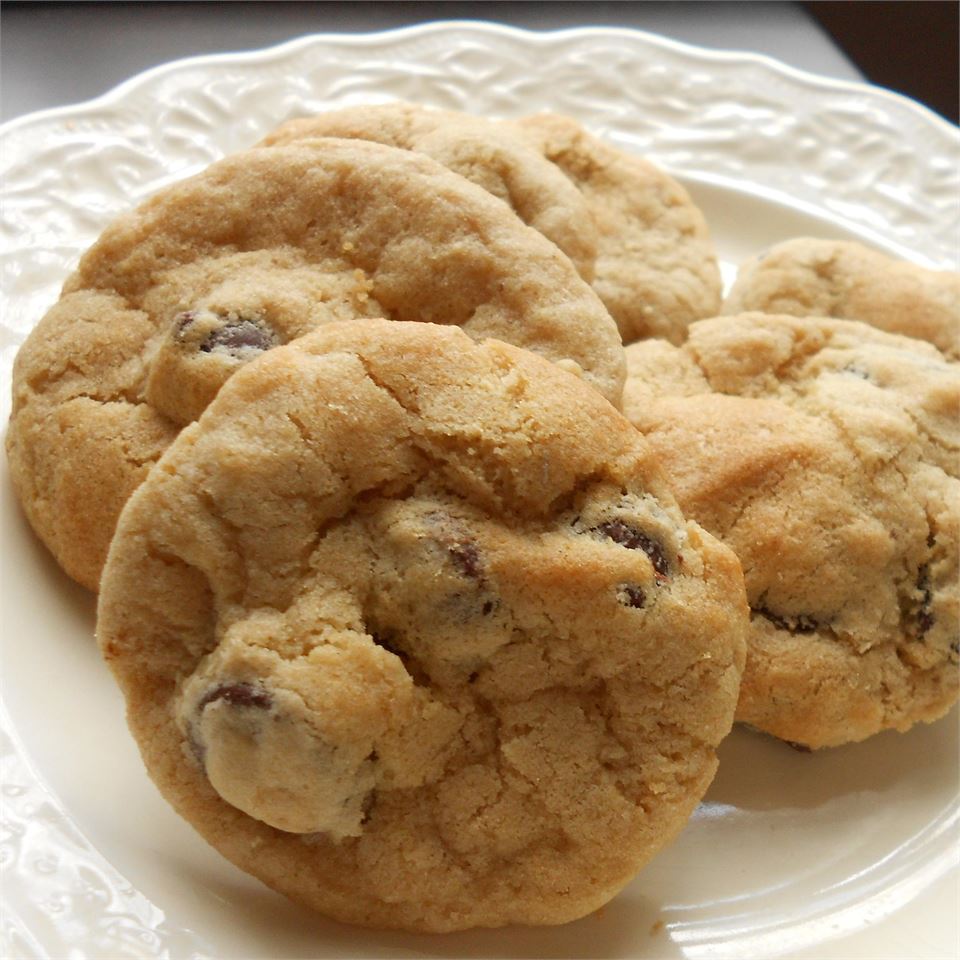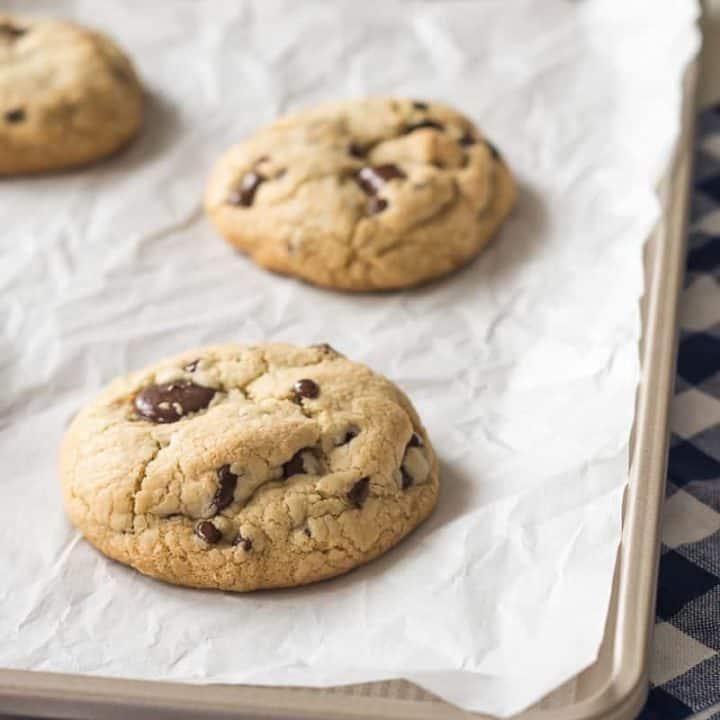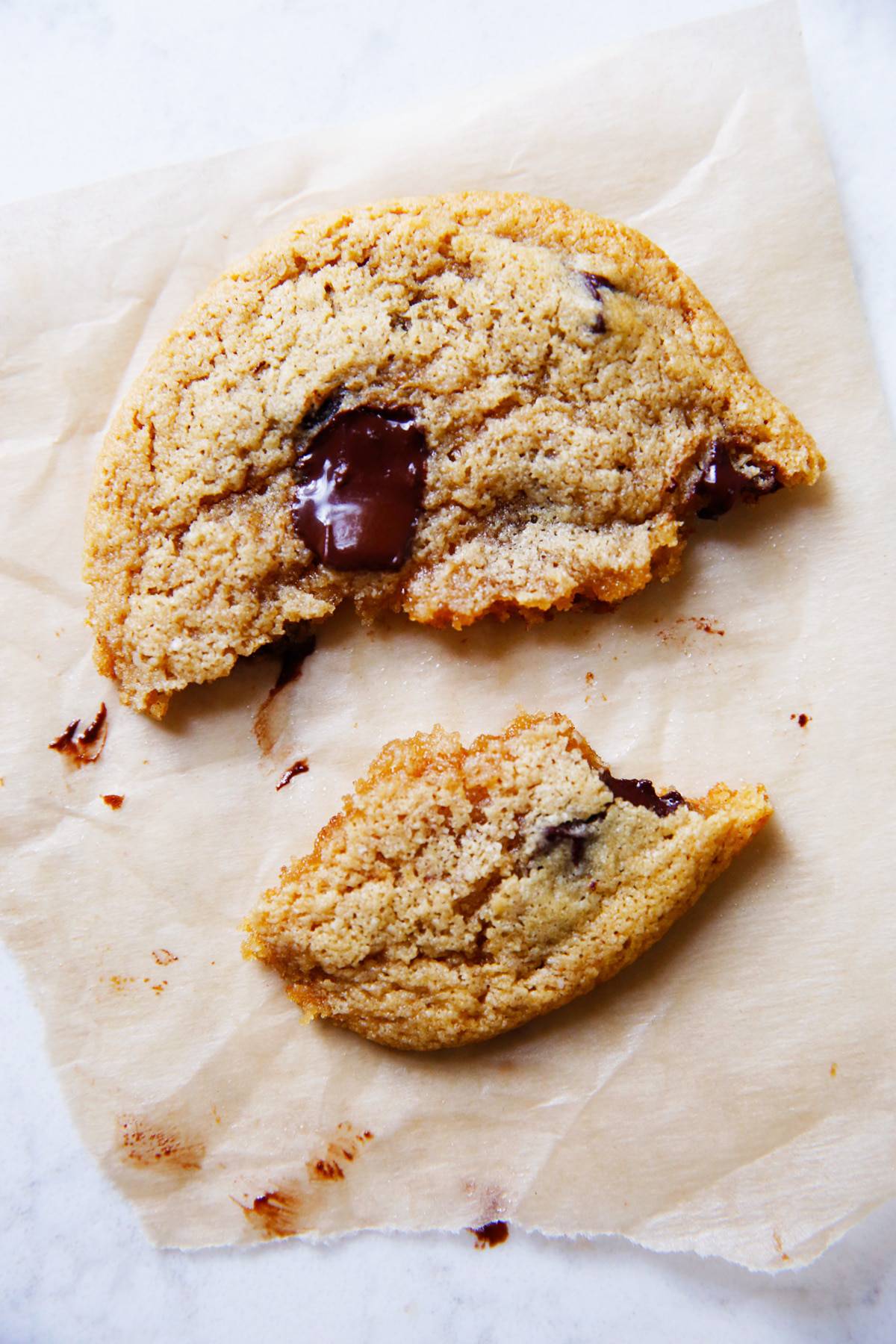Gluten Free Chocolate Chip Panettone
5.0
(3)
Your folders
Your folders
Prep Time: 70 minutes
Cook Time: 70 minutes
Total: 410 minutes
Servings: 20
Author : Gluten Free Alchemist - Kate Dowse

Ingredients
Export 24 ingredients for grocery delivery
Instructions
Step 1
Weigh the ground psyllium husk into a small bowl and add the 190g portion of warm milk
Step 2
Stir well and leave to stand for a minimum of 10 to 15 minutes to hydrate.
Step 3
Weigh the yeast and honey into a small bowl.
Step 4
Add the 60g warm milk being very careful to check the temperature is hand warm (38 C/100 F).
Step 5
Lightly whisk the mixture to blend and to help the yeast dissolve.
Step 6
Set aside to stand in a warm place for 10 minutes. The mix should become frothy and develop a ‘head’. If it doesn’t, the room may be too cold or the yeast may be ‘dead’. To test again, stir through and set the bowl over a mug of steaming water. Leave for a further 10 minutes. If the mix still doesn’t froth, the yeast is no good (the milk was too hot or the yeast too old). Throw it away and start the yeast activation stage again.
Step 7
Weigh all the flour blend ingredients into a large mixing bowl and stir well until evenly combined. (If using a stand mixer, weigh directly into the mixer bowl).
Step 8
Rub the cold, cubed butter into the flour blend with finger tips, until it resembles coarse breadcrumbs.
Step 9
Break the eggs into a bowl (weigh if possible, to check they are in weight range) and beat lightly with a fork.
Step 10
Add the egg to the flour bowl along with the hydrated psyllium and activated yeast.
Step 11
Also add the glycerine, vanilla extract and lemon juice.
Step 12
Using an electric mixer (hand or stand) with dough hooks attached, beat the mixture well until it becomes a stiff batter.
Step 13
Scrape down the sides of the bowl with a firm spatula and re-mix for a further 4 to 5 minutes.
Step 14
Scrape down the sides of the bowl again, pulling the dough-batter into the centre of the bowl in a rounded pile (so that any batter stuck to the sides doesn’t dry out).
Step 15
Set the mixer aside… you will need it again later!
Step 16
Cover the bowl with a plate or some clingfilm (not touching the batter) and set aside in a warm place for an hour +, until the dough has doubled in size. This is the first proof.
Step 17
While proof 1 is taking place, prepare the Panettone tin, by lining with a Panettone paper case (for a 750g Panettone). I use a spring-form (or loose-bottom) Panettone tin (as you will need to be able to release, remove and invert the baked Panettone quickly without squashing) – size diameter 6” (15 cm) x height 5” (12.5 cm). The paper Panettone case is essential. Do not make the bake without this.But the important thing re size, is that the case is for 750g and you have a supportive cake tin to place it in.
Step 18
You will also need to have ready a second tin/vessel/saucepan/or alternative mechanism to invert the Panettone as soon as it comes out of the oven. The vessel needs to be taller and wider than the baked Panettone itself. Bear in mind and calculate that the Panettone will rise above the case in height. The Panettone will need to be cooled upside down and suspended so that its inverted ‘top’ is not touching anything. I use a second tin that is 7” (18 cm) diameter x 7” (18 cm) tall, but your choice will need to work with your own Panettone size and shape.
Step 19
Also have ready 2 to 3 long skewers (metal or wood) with sharp points, that will fit through and beyond the Panettone sides.
Step 20
Once the dough has doubled in size, ‘knock it back’ by beating again thoroughly with the mixer and dough hooks.
Step 21
Add the chocolate chips and chopped nuts to the dough along with the additional liqueur.
Step 22
Beat the chocolate, nuts and liqueur into the dough with the mixer and dough hooks until the dough is even in consistency and the chocolate chips evenly distributed. If the chocolate has ‘bunched’ and not distributed well, use a firm spoon or spatula to give the dough a final mix by hand, to ensure it is even.
Step 23
Transfer the dough to the Panettone case (it should reach almost two-thirds of the height of the case), and smooth the top with the back of a spoon, or spatula. (Make sure there are no large air-pockets, by pushing down well as you fill the case).
Step 24
Cover the top of the Panettone tin and case lightly with clingfilm and place in a warmish room to proof for approximately 1½ hours (dependent on air temperature).
Step 25
The Panettone will be risen enough when the dough reaches almost the top of the case. Keep an eye on it.
Step 26
Pre-heat the oven to 180 C/350 F/Gas 4 when the dough has nearly finished its second proof.
Step 27
When ready to bake, gently glaze the top of the dough with beaten egg-wash using a pastry brush.
Step 28
Sprinkle the top with Demerara sugar and some chopped, roasted hazelnuts.
Step 29
Gently place in the oven on a baking tray (for base-heat protection).
Step 30
Bake at 180 C for 25 minutes and then turn the oven down to 150 C/300 F/Gas 2 (do NOT open the oven door).
Step 31
Bake for a further approx. 40 to 45 minutes. The Panettone will be well risen, golden and firm on the top and a skewer inserted will come out clean.
Step 32
BEFORE removing the Panettone from the oven, be sure to have everything you need ready to invert the cake.
Step 33
Remove the Panettone from the oven and immediately but gently remove the cake from the side-panel of the external metal tin (leaving the base and cake in place on the baking tray).
Step 34
Then immediately insert the skewers parallel through the sides of the cake paper wrapper, pushing through to the other side, as low as possible to the base of the cake (about 2 cm up from the bottom). Use two skewers placed towards either side of the cake for stability. A third is probably unnecessary.
Step 35
Working as quickly as possible, the Panettone needs to be inverted and suspended, so that it hangs from the skewers over the prepared cooling ‘vessel’. Although this can be done by hand, the cake is hot and still very soft, so any pressure will compress it. To overcome this, I have found the easiest way is to place the cooling vessel over the upright cake, so that it sits on the skewers. Then using the support of the baking tray and holding both baking tray and ‘vessel’ in place, quickly flip the whole thing over (it may help to have a second pair of hands available).
Step 36
Remove the baking tray (now on the top) and the metal base of any baking tin that was in place.
Step 37
Leave the Panettone to cool completely suspended upside down, before turning back upright.
Step 38
Store in an airtight container or well-wrapped.
Top similar recipes
Curated for youYour folders

 316 views
316 viewsChocolate Chip Cupcakes (Gluten Fre...
theloopywhisk.com
5.0
(1)
25 minutes
Your folders

 388 views
388 viewsGluten-Free Chocolate Chip Cookies
kingarthurbaking.com
4.6
(160)
11 minutes
Your folders

 1905 views
1905 viewsGluten-Free Chocolate Chip Cookies
cooking.nytimes.com
5.0
(1.0k)
Your folders

 286 views
286 viewsGluten Free Chocolate Chip Cookies
joyfoodsunshine.com
5.0
(123)
10 minutes
Your folders

 242 views
242 viewsGluten Free Chocolate Chip Cookies
glutenfreeonashoestring.com
5.0
(322)
12 minutes
Your folders
 265 views
265 viewsGluten Free Chocolate Chip Cookies
glutenfreeonashoestring.com
Your folders

 272 views
272 viewsGluten Free Chocolate Chip Cookies
momables.com
4.8
(6)
9 minutes
Your folders

 391 views
391 viewsGluten-Free Chocolate Chip Cookies
delish.com
5.0
(2)
Your folders

 298 views
298 viewsGluten Free Chocolate Chip Cookies
asaucykitchen.com
4.5
(39)
10 minutes
Your folders

 305 views
305 viewsChocolate Chip Cookies (Gluten Free...
allrecipes.com
4.5
(208)
Your folders

 434 views
434 viewsGluten Free Chocolate Chip Cookies
flippindelicious.com
4.9
(7)
15 minutes
Your folders

 429 views
429 viewsGluten-Free Chocolate Chip Cookies
girlversusdough.com
5.0
(4)
10 minutes
Your folders

 427 views
427 viewsGluten-Free Chocolate Chip Cookies
jessicagavin.com
4.6
(19)
30 minutes
Your folders

 233 views
233 viewsGLUTEN FREE CHOCOLATE CHIP COOKIES
lexiscleankitchen.com
5.0
(2)
10 minutes
Your folders

 245 views
245 viewsGluten-Free, Dairy-Free Chocolate C...
momables.com
Your folders

 381 views
381 viewsChocolate Chip Banana Bread (Gluten...
theloopywhisk.com
5.0
(5)
60 minutes
Your folders

 229 views
229 viewsGluten Free White Chocolate Chip Co...
theloopywhisk.com
5.0
(3)
13 minutes
Your folders

 430 views
430 viewsTahini Chocolate Chip Cookies (Glut...
theloopywhisk.com
5.0
(1)
15 minutes
Your folders

 360 views
360 viewsEasy Gluten-Free Chocolate Chip Coo...
glutenfreebaking.com
4.3
(4)
10 minutes